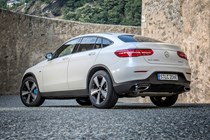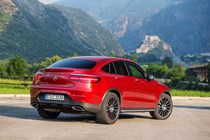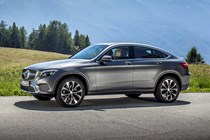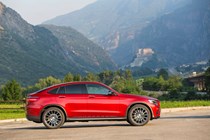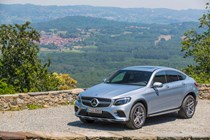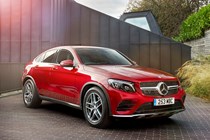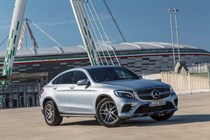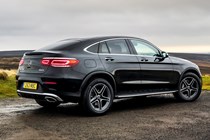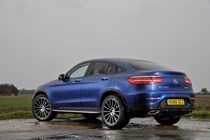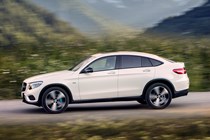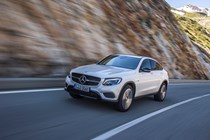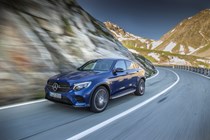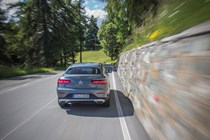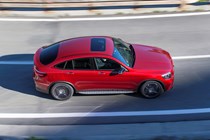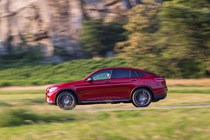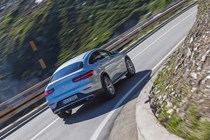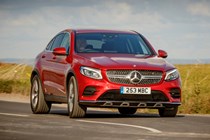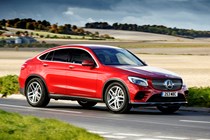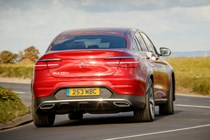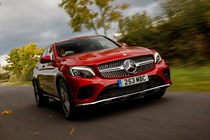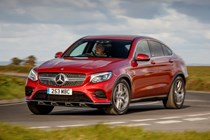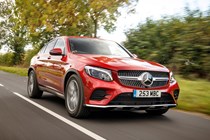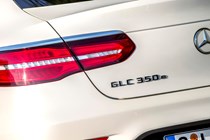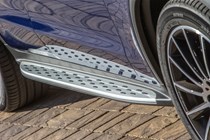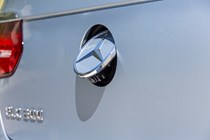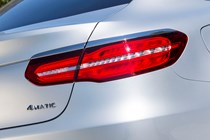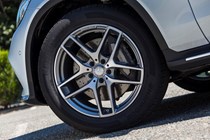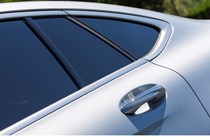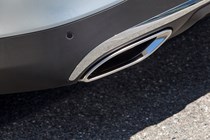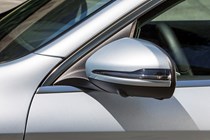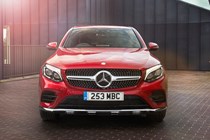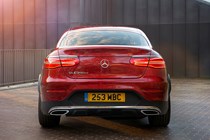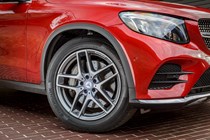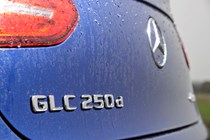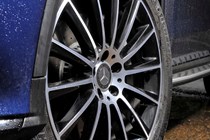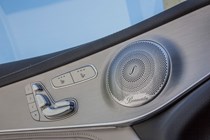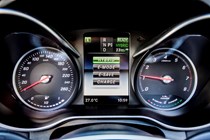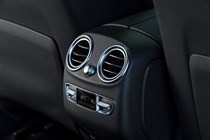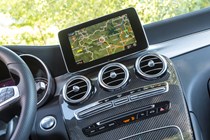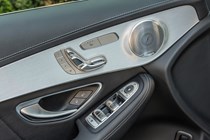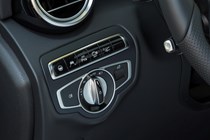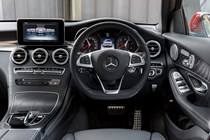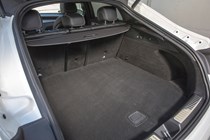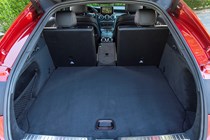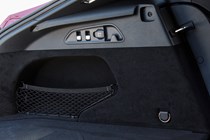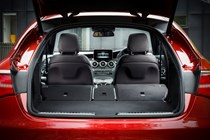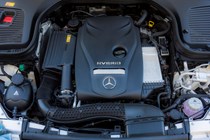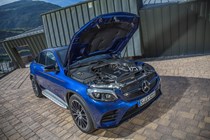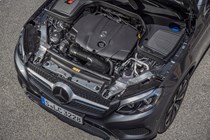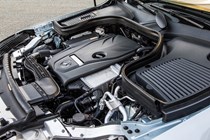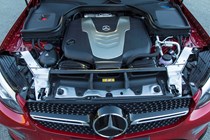
Mercedes-Benz GLC-Class Coupe running costs and reliability
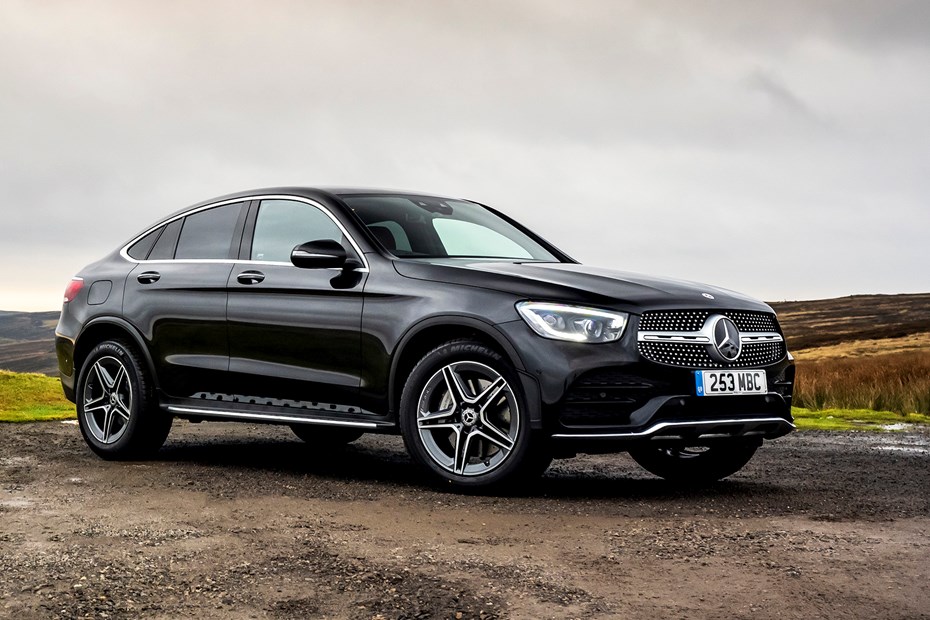
Miles per pound (mpp) ⓘ
| Petrol engines | 3.2 - 4.9 mpp |
|---|---|
| Diesel engines | 4.3 - 5.6 mpp |
| Plug-in hybrid petrol engines * | 4.6 - 4.9 mpp |
| Plug-in hybrid diesel engines * | 5.2 - 5.5 mpp |
Fuel economy ⓘ
| Petrol engines | 21.9 - 33.2 mpg |
|---|---|
| Diesel engines | 33.6 - 44.1 mpg |
| Plug-in hybrid petrol engines * | 31.4 - 33.6 mpg |
| Plug-in hybrid diesel engines * | 40.9 - 42.8 mpg |
- Good fuel economy from all-non AMG models
- Low CO2 from diesel and PHEV models
- Best not talk about the GLC 43, 63 and 63 S
The GLC Coupe’s four-cylinder engines are a recent addition to the range and that’s reflected in their competitive fuel economy. The 220 d is the most efficient and it makes 40.9mpg combined on the WLTP ‘real world’ test, and emits from 137g/km of CO2. The 300 d can’t quite match that, with 39.2mpg and 157g/km, expect it to be much closer to the 220 d in real life.
New for 2020 is the plug-in hybrid 300 e which significantly widens the appeal of the GLC Coupe. The headline news is a battery-only range of up to 27 miles and a claimed Combined 117.7mpg on the WLTP real-world fuel consumption test.
The more powerful AMG GLC 63 and GLC 63 S models are going to be costly and not particularly green. Economy of more than 20mpg on A-roads and motorways could be possible driven gently, but given how fun these cars are to drive, some owners may achieve far less than this.
Are they green?
These are big SUVs, so don’t expect miracles. However, the GLC Coupe 220 d puts in a good performance, and it puts out lower CO2 emissions lower than the BMW X3 or Audi Q5. The 137g/km figure isn’t bad at all, and that makes it cheaper to tax than its two main premium rivals. For bigger wheels or other choice optional extras, though, and this figure will increase.
As with fuel economy, expect impressively high levels of CO2 to be produced by AMG models. The pre-facelift cars produced in excess of 270g/km, and we wouldn’t expect this to reduce post-facelift.
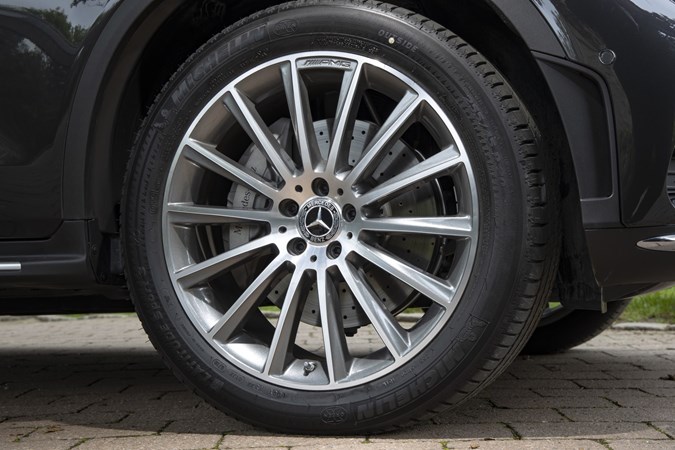
Mercedes-Benz GLC Coupe reliability
Mercedes-Benz has a good reputation for reliability and quality, but perception might not reflect reality. In the 2019 JD Power UK Vehicle Dependency survey, it came fifth from bottom, finding itself ahead of just Jaguar Land Rover, Audi, Fiat and BMW.
The GLC Coupe’s SUV sister car has a number of recalls posted against it. In 2018, there were eight relating to everything from front seat belt tensioners not functioning to inadequate bonding of the windscreen. Said issues were all fixed under warranty by Mercedes-Benz.
But in terms of tried and tested tech, the GLC Coupe shouldn’t be any better or worse than any other Mercedes-Benz. The interior is shared with the C-Class, so not only is it attractively designed, but it feels solid to the touch.
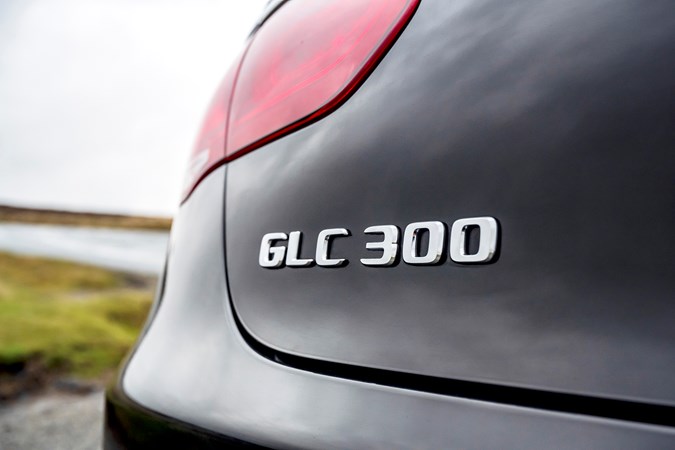
Ongoing running costs
| Road tax | £190 - £600 |
|---|---|
| Insurance group | 29 - 49 |
Get an insurance quote with

|
|



